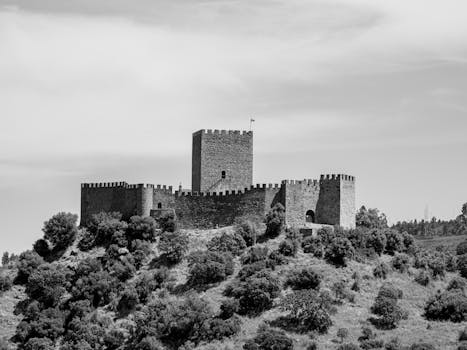
Traveling Through Time: How Europe’s Historical Heritage Shapes Modern Lifestyles in 2025
Traveling Through Time: How Europe’s Historical Heritage Shapes Modern Lifestyles in 2025. Europe, a continent steeped in history and tradition, has a unique ability to transport us through time. From the ancient ruins of Greece and Rome to the medieval castles of England and France, every corner of Europe is filled with relics of the past. But Europe’s historical heritage is not just a relic of bygone eras; it continues to shape modern lifestyles in profound ways.
Architecture and Urban Planning
The influence of historical heritage on modern lifestyles can be seen in Europe’s architecture and urban planning. Many European cities have preserved their historical centers, with narrow streets, quaint squares, and grand monuments that reflect the architectural styles of past centuries. For example, the Gothic spires of Prague, the Renaissance palaces of Florence, and the Baroque fountains of Rome all contribute to the unique character of these cities. These historical centers are not just tourist attractions; they are also vibrant hubs of modern life, with trendy cafes, boutiques, and restaurants that cater to locals and visitors alike.
Art and Culture
Europe’s historical heritage has also had a profound impact on modern art and culture. From the works of Shakespeare to the masterpieces of Michelangelo, Europe’s rich cultural legacy continues to inspire artists, writers, and musicians today. The continent is home to numerous museums, galleries, and performance venues that showcase both historical and contemporary art, providing a unique glimpse into the evolution of European culture over time. For instance, the Louvre in Paris, the Uffizi Gallery in Florence, and the National Gallery in London are just a few examples of the many world-class museums that house some of the most iconic works of art in human history.
Cuisine and Food Culture
European cuisine is another area where historical heritage has had a lasting impact. Traditional dishes, ingredients, and cooking techniques have been passed down through generations, with many regional specialties still enjoyed today. From the pasta dishes of Italy to the seafood stews of Spain, and from the beer gardens of Germany to the patisseries of France, European food culture is a rich tapestry of historical and modern influences. The continent’s famous wine regions, such as Bordeaux, Tuscany, and Champagne, are also a testament to the enduring legacy of historical viticulture and winemaking traditions.
Modern Lifestyles and Cultural Exchange
In 2025, Europe’s historical heritage continues to shape modern lifestyles in many ways. The continent’s rich cultural diversity, fostered by centuries of trade, migration, and cultural exchange, has created a vibrant and dynamic society that values tolerance, creativity, and innovation. From the cosmopolitan cities of Amsterdam and Berlin to the charming towns of the Scottish Highlands and the Greek islands, Europe’s historical heritage has created a unique cultural landscape that is both deeply rooted in the past and open to the future. As the world becomes increasingly interconnected, Europe’s historical heritage serves as a reminder of the importance of preserving cultural traditions while embracing modernity and progress.





